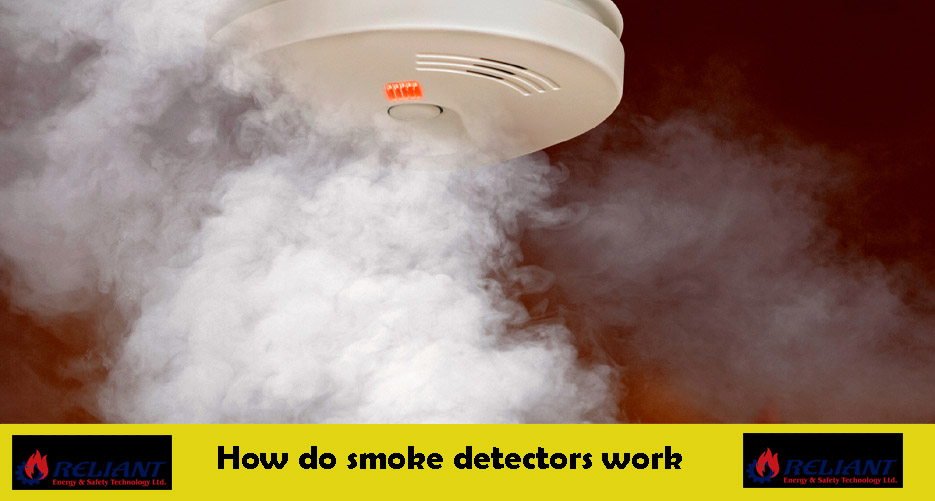A smoke detector is a safety item that should be in every home. In homes with properly working smoke alarms, the chance of dying in a fire is cut in half. In case of a fire, they can find smoke early enough to tell you and your family before it’s too late. It’s important to put smoke alarms in the right places and keep them in good shape so that if there’s a fire, you’ll know right away.
Every two hours, a person dies in a fire or from an accident caused by a fire in the United States. According to information from the National Fire Protection Association, most people who lived through house fires did so because the building had working smoke alarms. According to a linked NFPA study, smoke detectors could save close to 1,000 lives each year if everyone used them and kept them in good shape.
A smoke detector can be used in a business, where it is usually part of a bigger fire alarm system, or it can be used in your home by itself. There are two kinds Smoke detectors: the ionization detector and the photoelectric detector. Read on to learn more about How do smoke detectors work.
How Do Smoke Detectors Work?
Basically, smoke alarms go off when too many smoke particles get into the chamber and set off a sensor that makes the noise go off. Different kinds of smoke alarms work in different ways, so let’s take a look at the different kinds.
Photoelectric Sensors
A photoelectric detector is a type of smoke alarm that uses photoelectric sensors. Sensors like this are used in a lot of different places. If something breaks the beams that the sensor is sending out, it often sets off a warning. These sensors are put in smoke alarms at 90-degree angles to each other. This makes them more sensitive and makes it easier for them to pick up on smoke.
No matter if the light comes in through a window or a candle, there is always a source. When there is smoke, it will block some or all of the light particles, letting the monitor know that something is wrong. The sensor sets off the warning, which alerts the people in the building. The problem can then be fixed, or if necessary, the building can be evacuated.
Ionization Sensors
Ionization devices find smoke in a different way that is more complicated. An Ionization chamber is used in these devices. This chamber is made when a small amount of radioactive material moves between two electrically charged plates. When nuclear material and charged plates are put together, they Ionize the air and make a current. When smoke gets into the detector, it interrupts the flow of electricity, which makes the warning sound.
It’s important to know that Ionization alarms have a very small amount of radiation, so they don’t pose a health risk.
What’s the difference between photoelectric and ionisation smoke detectors?
Photoelectric and ionization smoke detectors are two popular ways to tell if there is smoke or a possible fire. They work in different ways, which means they can be used for different things.
Photoelectric smoke alarms use a light source (usually an LED) and a sensor that responds to light. When smoke particles get into the chamber of the detector, they spread the light, which makes the light bounce back onto the sensor. The warning goes off because of this disturbance. Photoelectric devices are especially good at spotting fires that are still smouldering and spotting larger smoke particles.
Ionization smoke detectors, on the other hand, use a small amount of radioactive material to turn the air inside the device into charged particles. When smoke gets into the chamber, it messes up the ionization process. This causes the electrical current to drop, which makes the alarm go off. Ionization monitors are more sensitive to fires that burn quickly and have a lot of flames, as well as to small smoke particles.
Which of these devices you choose will depend on your needs. Photoelectric detectors are better at finding slow, smouldering fires, while ionization detectors are better at quickly finding fast, flaming fires. Some people choose dual-sensor smoke alarms, which use both technologies to protect against more types of fires.
How do you choose the right smoke detectors for your home?
For fire safety, it’s important to choose the right smoke alarms for your home. To make an educated decision, think about these things. First, figure out what kinds of fires are Most Dangerous in your area. If most fires are slow and smouldering, choose photoelectric detectors. If most fires are fast and flaming, choose ionization detectors. Second, make sure the devices meet local rules and have labels that say they are certified. Third, think about using detectors that are linked to each other so that when one alarm goes off, they all go off. Fourth, choose devices with a power source that lasts a long time, like a lithium battery that lasts 10 years. Lastly, put detectors in key areas like bathrooms, hallways, and the kitchen to cover the whole house.
What do smoke detectors detect and not detect?
Smoke detectors are made to pick up on the smoke and small particles in the air that often come with fires. They work well to let you know when smoke could be a sign of a fire. But smoke alarms don’t pick up on heat or other dangers, such as carbon monoxide (CO). They are specialized devices that are only good for finding smoke. You shouldn’t count on them to find heat-related risks or CO gas. For these extra safety issues, you need separate devices like carbon monoxide detectors and heat detectors.
Conclusion
In conclusion, smoke detectors use different technologies, mostly ionization or photoelectric sensors, to find smoke particles in the air. When these devices sense smoke, they set off an alarm to warn you of possible fire hazards. For fire safety in homes and buildings, it’s important to know how smoke alarms work, since they’re the most important way to warn people of a fire and save lives.
Read More: Importance of smoke detector

